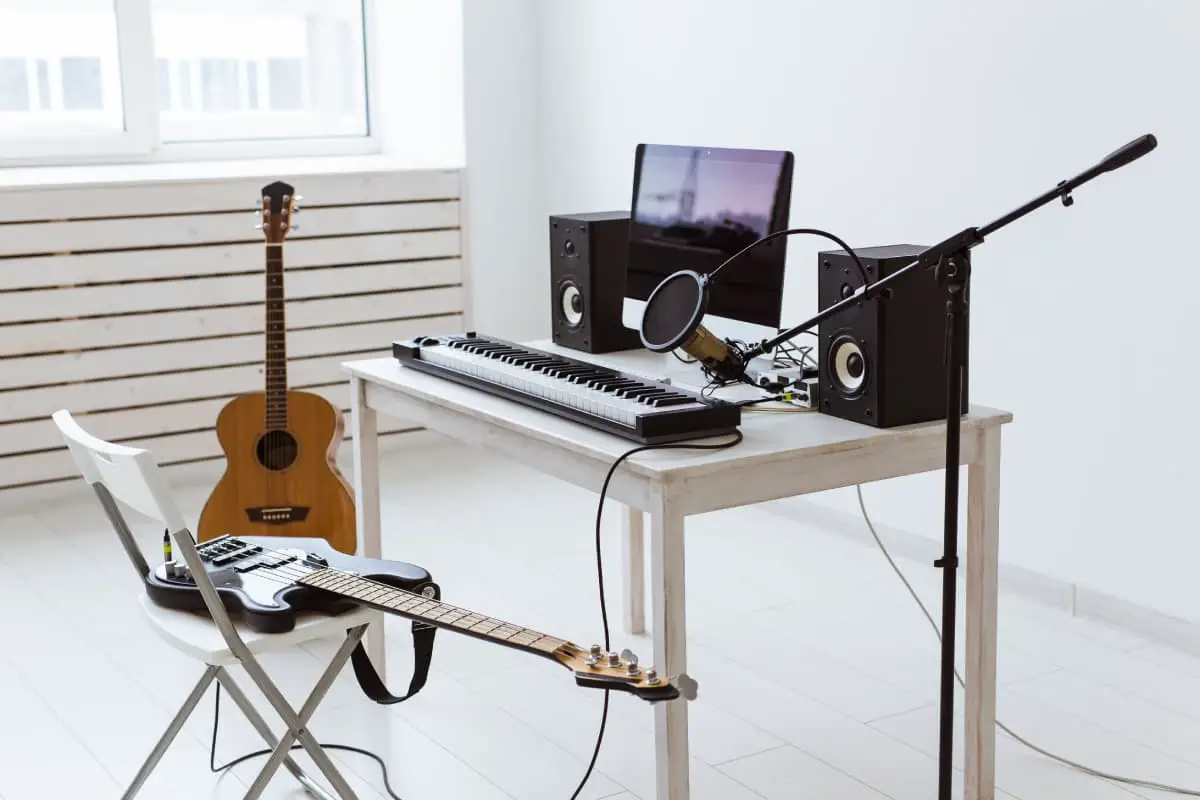Recording your music can get difficult and expensive, as a decent audio interface can set you back a few hundred dollars. If you’re a beginner who just wants to track their progress, or if you want to create some crude demos to show your sick new riffs to your bandmates, you’ll probably think that investing a lot of money in that can be excessive. However, there is no need to worry since you can create decent recordings even without an audio interface.
Here are some ways in which you can record your music without an audio interface:
- Plug the guitar directly into the computer.
- Plug your amp into the computer.
- Use a USB microphone.
- Make analog recordings.
- Use virtual instruments.
- Use your phone’s microphone.
- Use your laptop’s built-in microphone.
In this article, I’ll explain some simple but effective recording methods without an audio interface. After reading and experimenting, you’ll be able to make quick and simple recordings without spending a lot of money on an audio interface.
👇😀👇NOTE👇😀👇
If you want to find out what my recommended guitar gear is, then here is what I recommend on Amazon:
- Fender Cutaway Acoustic-Electric Guitar Bundle (MY FAVORITE GUITAR)
- Snark SN-8 Super Tight All Instrument Tuner (Easiest Tuner I’ve Used😏)
- 6 String Acoustic Guitar Capo (Best CAPO for quick changes)
- Dunlop Max Grip 1.0mm Nylon Picks (Thick Guitar Pick So You Don’t Lose Grip!)
- Universal Guitar Stand (Cheap & Minimalist Guitar Stand I Recommend)
- Levy’s 2″ Wide Quick Adjust Guitar Strap (Best Guitar Strap For Any Level)
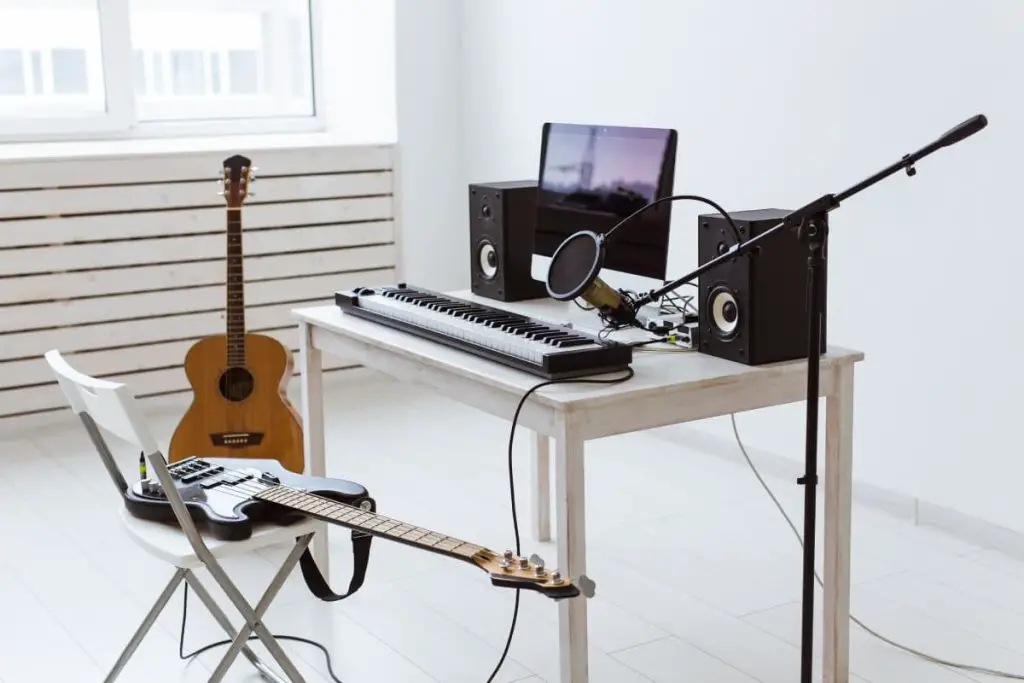
1. Plug the Guitar Directly Into the Computer
Plugging your guitar into your computer is probably the easiest and the most straightforward way to record your music without an audio interface. You only need a simple adapter, and you’re ready to go.
While this method is quick, easy, and cheap, it does not produce the best results. This will happen because you will be relying on your computer’s built-in sound card, and it’s highly likely that it was not meant for recording music.
Having a sound card that wasn’t meant for recording will mean that the audio quality will not be particularly good. You can try to tweak it and make it a little bit better in your DAW, such as Reaper or Garageband, but you can’t make professional recordings this way.
You could, of course, upgrade your sound card, but you might as well buy an audio interface for that much money. Nevertheless, you’ll be able to create decent recordings to show your ideas to your friends or band members.
Keep in mind that this idea won’t be applicable to all computers. Some cheap laptops won’t pick up any sounds from your guitar, even if your DAW or virtual amp is set up properly. You might be able to mitigate this with an external sound card, but it is not guaranteed.
2. Plug Your Amp Into the Computer
This is a more sophisticated version of the previous option. Plugging your guitar into the amp and then plugging your amp into your computer will give you more control over your sound and may result in better sound quality.
Many modern amps can be connected to a computer via a USB cable, which is the best and easiest way of doing this. While the audio quality you get this way will probably not be the best, it will still be reasonably good and do a decent job.
Alternatively, if there is a line out or a headphone socket on your amp, you can use this to connect your amp to your computer via a cable. This will work, but the audio quality will be far inferior to the one you’ll get with a USB cable.
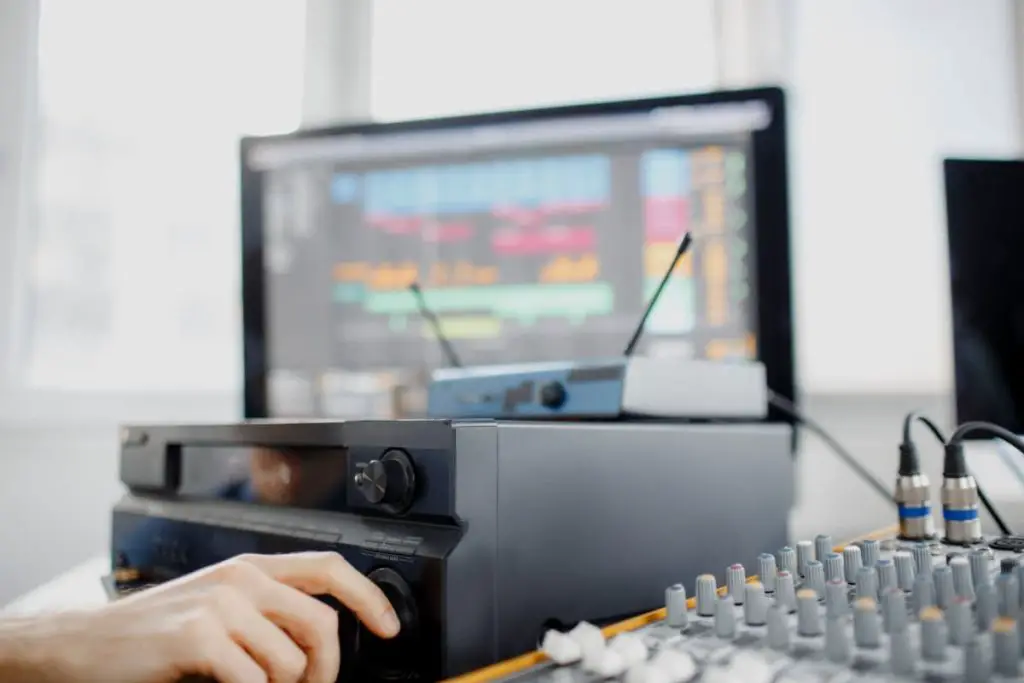
3. Use a USB Microphone
USB microphones are a great tool for recording sound, and they can be reasonably good for recording guitar (not in a professional setting, though). A USB microphone will typically have an audio interface built in, which will have a positive effect on your sound quality.
They can be particularly good for recording acoustic guitars since they are less loud than electric ones and won’t overpower the microphone. This doesn’t mean that you can’t use them to record an electric guitar, but you’ll have to tinker with the volume and gain settings a little to get the most out of this setup.
The major downside here is that a microphone will also pick up any background noise that will be impossible to remove from the track later. If you’re planning to use this technique, make sure that there is at least some type of makeshift sound treatment in your room, so your riffs don’t mix with the sound of a neighbor’s lawn mower.
Alternatives
Technically speaking, you could use any type of microphone if sound quality is not a big concern for you. You could even use the same microphone that you use for Zoom meetings. If you do opt for this, don’t expect much. It will record the sound, but that’s about it.
You could also use your webcam, especially if it’s not a low-end one. This could work reasonably well, especially with an acoustic guitar. You’ll have to put in a few extra minutes to extract the sound from the video, but it might be worth it.
4. Make Analog Recordings
If you’re a fan of vintage recording techniques, you can record your guitar on tape and then convert it to a digital format. Or, to be even more old school, you can leave it on tape and pass the tape around for that authentic 1980s experience.
You can do this with a simple tape recorder. These might be a bit hard to come by these days, and it can be a bit difficult to get cassettes, but if you’ve got a recorder lying around since the olden days, you can put it to use.
High-end tape recorders can get relatively expensive. If you don’t have one, you can look them up online or even visit a flea market and try to find a bargain. I guess that you probably don’t want to pay more for a tape recorder than you would for an audio interface.
This recording technique will probably be fun, and, if nothing else, a completely new experience for you. You might even grow to like it and decide to switch to analog recordings completely! You’ll get a completely raw recording, and if you experiment with this technique a little bit, the recordings will probably be quite good.
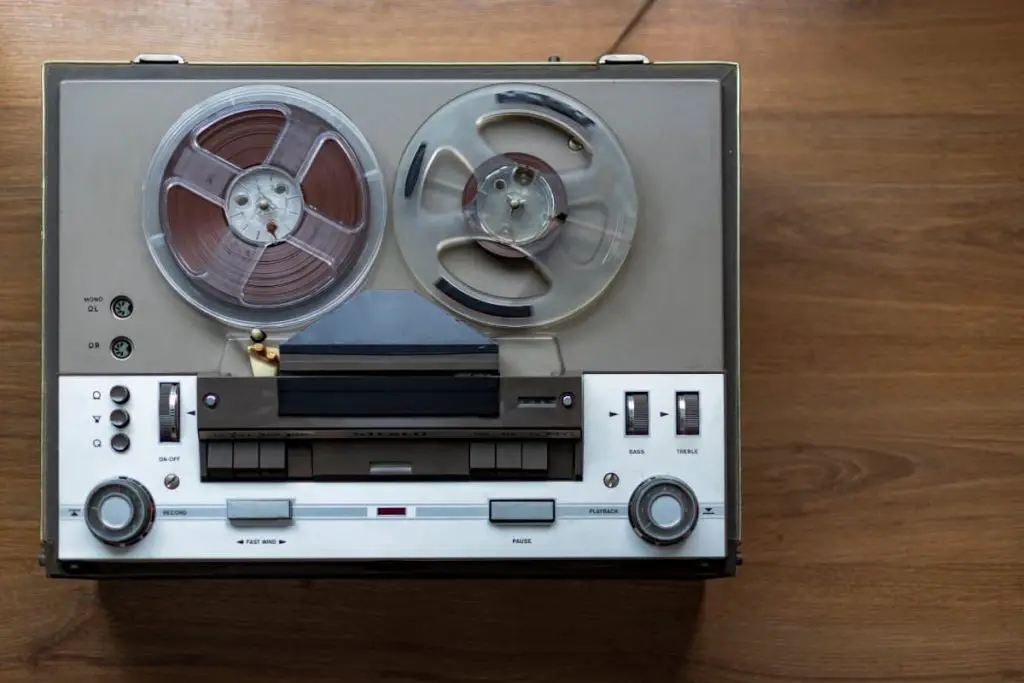
Use a Boombox
Boomboxes can typically record sound; if you’ve got one by any chance, you can also use it to make a quick recording. Even if you don’t have one, they’re usually not particularly expensive and difficult to get.
A tape recorder might sound better than a boombox, but I guess that if you’re in a hurry and on a shoestring budget, a boombox will get the job done. If nothing else, you’ll get extra coolness points for such an old-school recording technique.
5. Use Virtual Instruments
This piece of advice can be seen as cheating to some extent, as it is not exactly a recording technique. However, it will allow you to create music and share your ideas with other people so that it may work really well.
Even free DAWs come with some virtual instruments, so you won’t even have to invest any money in this technique. What you do need to invest in is time and effort. This type of music-making is often frowned upon, as it doesn’t involve any actual playing, but there is a learning curve to it, and you won’t be able to create a perfect track in just a few clicks.
What’s more, this type of production is quite popular in electronic music, and, at least in theory, you could create an entire career solely based on virtual instruments. Remember that this is looked down upon in rock music, so you should probably stick to real instruments for most purposes. But if you’re just aiming to make a quick demo recording, it will do the job.
This technique will allow you to create tracks with superior sound quality, especially compared to the previous techniques. However, even though the sound will be crystal clear, the end product may sound plastic and a bit fake, so it’s not the best option if you want a natural recording.
Use a MIDI Keyboard
If you have access to a MIDI keyboard, you can use it to “play” not just guitar, but pretty much any instrument you need. This can be a great way to create good tracks quickly, but since MIDI keyboards cost about as much as audio interfaces, it’s probably best to get an interface.
Alternatively, you could use your iPhone as a MIDI keyboard. If you have Garageband on it, you can quickly and effectively create tracks and share your ideas.
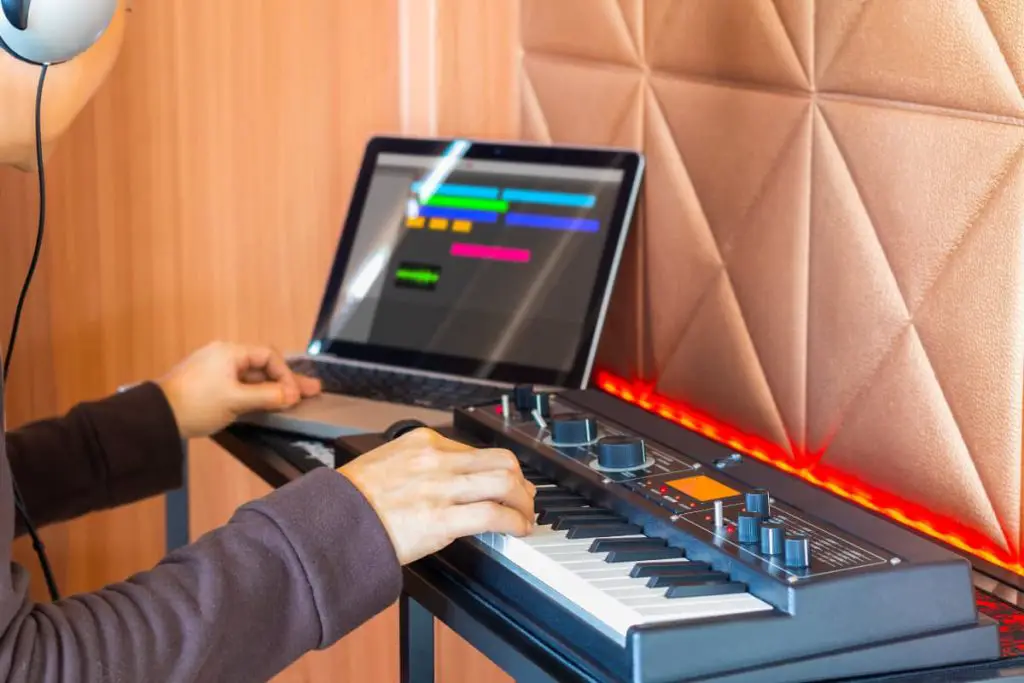
6. Use Your Phone’s Microphone
While this is definitely not the best route to perfectly polished recordings, it is probably the easiest and quickest way to record your guitar without an audio interface. Take your phone, enter your recording app of choice, press record, and jam away.
The sound quality you get with this technique will probably be relatively poor, especially with an older phone. However, with an iPhone or a high-end android, you might get pretty good results, especially if your goal is not to create recordings for your latest album.
I’d advise that you use this technique with an acoustic guitar, as you may end up with just noise if you use an electric guitar. This is not to say that it is impossible to record an electric guitar with your phone, but it requires a little bit more effort to set up the phone and the amp.
Unless your phone has a splendidly good microphone, it is also not a good idea to use it to record a bass guitar (Question: how long is a bass guitar neck?). Some phones will record something that sounds like background humming, while others will give you a sound that’s very dull, percussive, and high.
7. Use Your Laptop’s Built-In Microphone
If all else fails, or if you have no other option for some reason, maybe your phone battery has died, or you’ve dropped it in the toilet after stepping on the adapter for your guitar cable, you can try using your laptop’s microphone.
This will certainly help you make some sort of recording, but the sound quality you can expect is very, very low. Built-in microphones on laptops are typically pretty poor in quality, and they can cause problems even during simple conversations or meetings, especially if it’s a cheap laptop.
If you’ve got a high-end laptop, you might get away with slightly better quality, but you still should not get your hopes up. You should only opt for this if there is truly no other option.
When Should You Get an Audio Interface?
You should get an audio interface when you start creating more serious records, which require a better sound quality. You don’t need an audio interface if you are recording purely for fun or for sharing ideas with bandmates.
Strictly speaking, you can get an audio interface anytime you want. The real question is: “When does it become a reasonable investment?” We can provide more concrete and straightforward answers to this question.
For example, if you’ve started playing in a band, it’s going really well, and you want to make some demo recordings, or even a real album, it’s a good idea to get an audio interface and a proper microphone.
Sure, you could probably record a demo without an audio interface, but if you really want to make a good impression, it’s best to polish it as much as possible. This goes without saying if you’re recording an EP or album that you will sell or share with the masses.
On the other hand, if you only record yourself to track your progress, for fun, or when you’ve written some new riffs you want to share, then an audio interface is probably not necessary. You can get decent recordings for these purposes if you just plug your guitar directly into the computer.
If you have some extra money on the side and want an audio interface simply because you want one and think it would make you enjoy your hobby more, then get one. While it might be necessary, it will not harm your playing in any way.
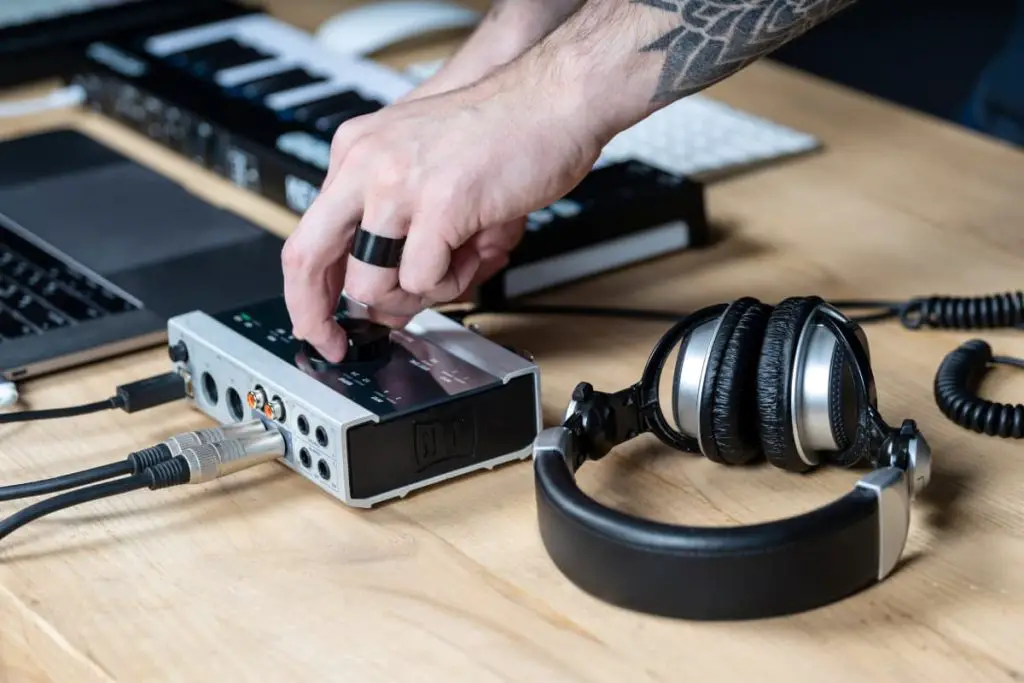
Why Do You Need an Audio Interface?
You need an audio interface to reduce latency and improve the quality of your recordings. Furthermore, an audio interface eliminates the need to use amps and microphones for recording and playing.
You can see your audio interface as a type of external sound card. However, unlike a sound card built into your computer, an audio interface is made specifically for recording. The sound card you have in your computer is typically an all-purpose sound card, and all-purpose things don’t usually do well at specific jobs, such as recording.
This means that an audio interface will give you a much better sound quality than a built-in sound card. An audio interface is the way to go if you’re aiming for a high-quality recording.
Another important feature is that audio interfaces practically eliminate latency. Latency is a lag between your playing and your computer picking up the sound. It can be practically impossible to play and/or sing in time if it gets too high. Audio interfaces dramatically reduce this lag, and with a good computer, they can eliminate it.
These are the two main benefits of using an audio interface, but some others exist, too, so let’s take a look at them.
No Amps Needed for Recording
Another great thing about audio interfaces is that they always include preamps, which boost the signal from your guitar (or other instruments) and improve the sound. This means that you don’t have to mess with miking your amp for recording. You can just plug your guitar directly into the interface and record.
This is an amazing feature for those of us who don’t have enough space for amps, mike stands, and all the other equipment that we need for recording. Furthermore, you can easily use your audio interface for practicing if you don’t have access to an amp. This will allow you to use various virtual amps and get the exact sound you wish.
You Can Record More Tracks at the Same Time
An audio interface will typically have at least two inputs, so you don’t have to record every instrument separately. You can record as many instruments as your interface allows and as many musicians as you can comfortably squeeze into your room or studio.
For example, if you want to record a solo while your buddy plays the rhythm guitar, you can do it without a problem. Or, if you want to record vocals while playing guitar, you can do that as well. After that, you can tweak each track individually to get just the kind of mix you wish.
Of course, it’s not super easy to get a professional sound quality in your bedroom or home studio (not saying it is impossible, though), but for most intents and purposes, an audio interface will help you achieve your goals.
This is not to say that it is absolutely necessary. As we’ve seen, you can record your guitar in many different ways, even if you do not have an audio interface. In some cases, the sound quality you’ll get will be close to the one you can get with an audio interface.
👇😀👇NOTE👇😀👇
If you want to find out what my recommended guitar gear is, then here is what I recommend on Amazon:
- Fender Cutaway Acoustic-Electric Guitar Bundle (MY FAVORITE GUITAR)
- Snark SN-8 Super Tight All Instrument Tuner (Easiest Tuner I’ve Used😏)
- 6 String Acoustic Guitar Capo (Best CAPO for quick changes)
- Dunlop Max Grip 1.0mm Nylon Picks (Thick Guitar Pick So You Don’t Lose Grip!)
- Universal Guitar Stand (Cheap & Minimalist Guitar Stand I Recommend)
- Levy’s 2″ Wide Quick Adjust Guitar Strap (Best Guitar Strap For Any Level)

